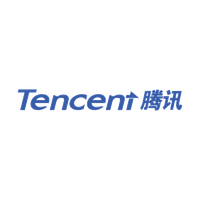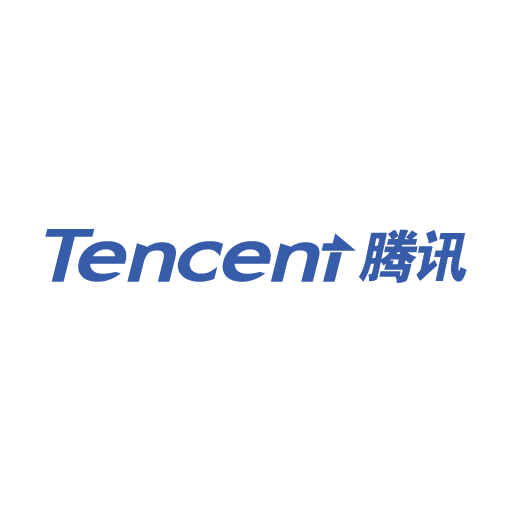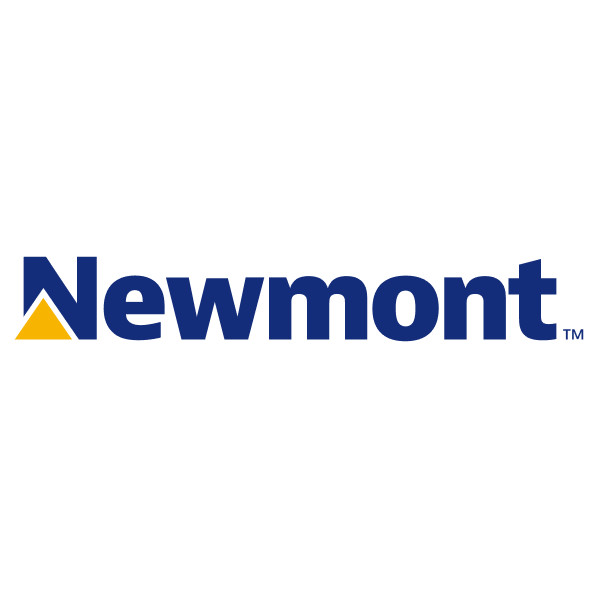
Tencent Holdings Ltd
HKEX:700


| US |

|
Johnson & Johnson
NYSE:JNJ
|
Pharmaceuticals
|
| US |

|
Berkshire Hathaway Inc
NYSE:BRK.A
|
Financial Services
|
| US |

|
Bank of America Corp
NYSE:BAC
|
Banking
|
| US |

|
Mastercard Inc
NYSE:MA
|
Technology
|
| US |

|
UnitedHealth Group Inc
NYSE:UNH
|
Health Care
|
| US |

|
Exxon Mobil Corp
NYSE:XOM
|
Energy
|
| US |

|
Pfizer Inc
NYSE:PFE
|
Pharmaceuticals
|
| US |

|
Palantir Technologies Inc
NYSE:PLTR
|
Technology
|
| US |

|
Nike Inc
NYSE:NKE
|
Textiles, Apparel & Luxury Goods
|
| US |

|
Visa Inc
NYSE:V
|
Technology
|
| CN |

|
Alibaba Group Holding Ltd
NYSE:BABA
|
Retail
|
| US |

|
JPMorgan Chase & Co
NYSE:JPM
|
Banking
|
| US |

|
Coca-Cola Co
NYSE:KO
|
Beverages
|
| US |

|
Walmart Inc
NYSE:WMT
|
Retail
|
| US |

|
Verizon Communications Inc
NYSE:VZ
|
Telecommunication
|
| US |

|
Chevron Corp
NYSE:CVX
|
Energy
|
Utilize notes to systematically review your investment decisions. By reflecting on past outcomes, you can discern effective strategies and identify those that underperformed. This continuous feedback loop enables you to adapt and refine your approach, optimizing for future success.
Each note serves as a learning point, offering insights into your decision-making processes. Over time, you'll accumulate a personalized database of knowledge, enhancing your ability to make informed decisions quickly and effectively.
With a comprehensive record of your investment history at your fingertips, you can compare current opportunities against past experiences. This not only bolsters your confidence but also ensures that each decision is grounded in a well-documented rationale.
Do you really want to delete this note?
This action cannot be undone.

| 52 Week Range |
366
677.5
|
| Price Target |
|
We'll email you a reminder when the closing price reaches HKD.
Choose the stock you wish to monitor with a price alert.

|
Johnson & Johnson
NYSE:JNJ
|
US |

|
Berkshire Hathaway Inc
NYSE:BRK.A
|
US |

|
Bank of America Corp
NYSE:BAC
|
US |

|
Mastercard Inc
NYSE:MA
|
US |

|
UnitedHealth Group Inc
NYSE:UNH
|
US |

|
Exxon Mobil Corp
NYSE:XOM
|
US |

|
Pfizer Inc
NYSE:PFE
|
US |

|
Palantir Technologies Inc
NYSE:PLTR
|
US |

|
Nike Inc
NYSE:NKE
|
US |

|
Visa Inc
NYSE:V
|
US |

|
Alibaba Group Holding Ltd
NYSE:BABA
|
CN |

|
JPMorgan Chase & Co
NYSE:JPM
|
US |

|
Coca-Cola Co
NYSE:KO
|
US |

|
Walmart Inc
NYSE:WMT
|
US |

|
Verizon Communications Inc
NYSE:VZ
|
US |

|
Chevron Corp
NYSE:CVX
|
US |
This alert will be permanently deleted.
Tencent Holdings Ltd


Tencent Holdings Ltd., a behemoth in the world of technology, epitomizes the synergy between innovation and monetization in the digital age. Founded in 1998 by Ma Huateng, also known as Pony Ma, Tencent has its roots deeply embedded in the rich soil of China's burgeoning internet sector. The company's initial breakthrough came with its instant messaging platform, QQ, which quickly became a household name across the country. This early success laid the groundwork for WeChat, Tencent's flagship social media app, which has since revolutionized the way Chinese people communicate and transact, blending features of messaging, social networking, e-commerce, and financial services seamlessly. WeChat's integration into daily life—not only as a communication tool but also as a platform for mobile payments and financial services—anchors Tencent's broad diversification strategy, making it an indispensable part of modern urban Chinese life.
The financial alchemy behind Tencent's success lies in its multifaceted revenue streams. The company derives a significant portion of its income through its gaming division, regarded as its cash cow, which includes blockbuster titles such as "Honor of Kings" and "PUBG Mobile." These games attract millions of players globally, generating extensive value through in-game purchases. Beyond gaming and social media, Tencent has leveraged its massive user base to venture into digital advertising, cloud computing, and fintech. The strategic investments in a wide array of sectors, including a stake in companies such as Tesla and Spotify, further bolster its financial robustness and market reach. This blend of organic and inorganic growth strategies crafts a compelling narrative of a company that thrives on creating interconnected ecosystems, seamlessly integrating daily consumer experiences with its expansive digital services.

Tencent Holdings Ltd., a behemoth in the world of technology, epitomizes the synergy between innovation and monetization in the digital age. Founded in 1998 by Ma Huateng, also known as Pony Ma, Tencent has its roots deeply embedded in the rich soil of China's burgeoning internet sector. The company's initial breakthrough came with its instant messaging platform, QQ, which quickly became a household name across the country. This early success laid the groundwork for WeChat, Tencent's flagship social media app, which has since revolutionized the way Chinese people communicate and transact, blending features of messaging, social networking, e-commerce, and financial services seamlessly. WeChat's integration into daily life—not only as a communication tool but also as a platform for mobile payments and financial services—anchors Tencent's broad diversification strategy, making it an indispensable part of modern urban Chinese life.
The financial alchemy behind Tencent's success lies in its multifaceted revenue streams. The company derives a significant portion of its income through its gaming division, regarded as its cash cow, which includes blockbuster titles such as "Honor of Kings" and "PUBG Mobile." These games attract millions of players globally, generating extensive value through in-game purchases. Beyond gaming and social media, Tencent has leveraged its massive user base to venture into digital advertising, cloud computing, and fintech. The strategic investments in a wide array of sectors, including a stake in companies such as Tesla and Spotify, further bolster its financial robustness and market reach. This blend of organic and inorganic growth strategies crafts a compelling narrative of a company that thrives on creating interconnected ecosystems, seamlessly integrating daily consumer experiences with its expansive digital services.
Revenue Growth: Tencent reported third quarter revenue of RMB 192.9 billion, up 15% year-on-year, with strong performance in games, fintech, and marketing services.
Profitability: Gross profit reached RMB 108.8 billion, up 22% year-on-year, and diluted EPS increased 19% year-on-year to RMB 7.575.
Gaming Strength: Domestic and international games grew robustly, driven by hits like Delta Force and Valorant, though international game growth is expected to decelerate next quarter.
AI Investments: Significant focus on AI, upgrading teams and infrastructure for foundation models and embedding AI into core products and ad tech.
Advertising Momentum: Marketing services revenue grew 21% year-on-year to RMB 36 billion, supported by AI-powered campaign tools and increased ad loads.
Margin Expansion: Gross margin improved to 56%, up 3 percentage points year-on-year, with positive mix shifts towards higher-quality revenue streams.
CapEx Guidance: 2025 CapEx will be lower than prior guidance but higher than 2024, mainly due to AI chip availability, not a change in strategy.
Consumer Trends: Fintech and payment growth benefited from gradual improvement in China consumer spending and robust online payment volumes.
Management

Ma Huateng, also known as Pony Ma, is a prominent Chinese businessman and the co-founder, chairman, and CEO of Tencent Holdings Ltd., one of the largest internet and technology companies in the world. Born on October 29, 1971, in Chaoyang, Guangdong, China, Ma Huateng has played a pivotal role in shaping the landscape of China's tech industry. He graduated from Shenzhen University in 1993 with a degree in computer science. In 1998, he and a group of classmates co-founded Tencent, initially focusing on developing internet-based instant messaging services. The launch of Tencent QQ, a messaging service, marked the company's early breakthrough and set it on a path to becoming a tech giant. Under Ma's leadership, Tencent expanded its products and services significantly, entering sectors such as social networking, mobile games, e-commerce, and digital payments. WeChat, a multi-purpose messaging, social media, and mobile payment app launched by Tencent, has become an integral part of daily life for millions of users, further establishing the company's influence. Ma Huateng is known for his strategic foresight and innovations, which have been instrumental in Tencent's success. He is recognized as one of the most influential figures in the technology industry and has been listed among the world's most powerful and wealthiest individuals by various publications. In addition to his work at Tencent, Ma is involved in several philanthropic efforts, focusing on health, education, and environmental issues. His leadership continues to drive Tencent's growth and adaptation in the competitive global tech market.

He graduated from Shenzhen University in 1993 with a degree in computer science. In 1998, he and a group of classmates co-founded Tencent, initially focusing on developing internet-based instant messaging services. The launch of Tencent QQ, a messaging service, marked the company's early breakthrough and set it on a path to becoming a tech giant.
Under Ma's leadership, Tencent expanded its products and services significantly, entering sectors such as social networking, mobile games, e-commerce, and digital payments. WeChat, a multi-purpose messaging, social media, and mobile payment app launched by Tencent, has become an integral part of daily life for millions of users, further establishing the company's influence.
Ma Huateng is known for his strategic foresight and innovations, which have been instrumental in Tencent's success. He is recognized as one of the most influential figures in the technology industry and has been listed among the world's most powerful and wealthiest individuals by various publications.
In addition to his work at Tencent, Ma is involved in several philanthropic efforts, focusing on health, education, and environmental issues. His leadership continues to drive Tencent's growth and adaptation in the competitive global tech market.

Mr. Chi Ping Lau, also known as Martin Lau, is a prominent figure in the technology and investment sectors, most notably associated with Tencent Holdings Ltd., one of the world's largest technology companies. Martin Lau was born in Hong Kong and earned his undergraduate degree in electrical engineering from the University of Michigan, followed by a master's degree in electrical engineering from Stanford University. He also earned an MBA from the Kellogg School of Management at Northwestern University. Before joining Tencent, Lau worked at Goldman Sachs in the investment banking division, where he gained significant experience in corporate finance and mergers & acquisitions. His expertise in these areas has been influential in Tencent's strategic approaches to corporate development and investment. Martin Lau joined Tencent in 2005 as Chief Strategy and Investment Officer. He was appointed as the company’s President in 2006, a role which has seen him responsible for overseeing the business operations of Tencent, including its VAS business, online media, and advertising strategies. Under his leadership, Tencent expanded beyond its initial offerings into new markets and sectors, including investments in global technology enterprises, contributing to its reputation as a formidable force in both domestic and international markets. Lau is recognized for his strategic vision, his role in guiding Tencent through significant acquisitions and partnerships, and his ability to balance innovation with regulatory compliance amid China's rapidly evolving tech landscape. His leadership has been pivotal in Tencent's growth and its influence in the global tech industry.

Before joining Tencent, Lau worked at Goldman Sachs in the investment banking division, where he gained significant experience in corporate finance and mergers & acquisitions. His expertise in these areas has been influential in Tencent's strategic approaches to corporate development and investment.
Martin Lau joined Tencent in 2005 as Chief Strategy and Investment Officer. He was appointed as the company’s President in 2006, a role which has seen him responsible for overseeing the business operations of Tencent, including its VAS business, online media, and advertising strategies. Under his leadership, Tencent expanded beyond its initial offerings into new markets and sectors, including investments in global technology enterprises, contributing to its reputation as a formidable force in both domestic and international markets.
Lau is recognized for his strategic vision, his role in guiding Tencent through significant acquisitions and partnerships, and his ability to balance innovation with regulatory compliance amid China's rapidly evolving tech landscape. His leadership has been pivotal in Tencent's growth and its influence in the global tech industry.
Chenye Xu is known for his role at Tencent Holdings Ltd, a leading Chinese multinational conglomerate holding company with subsidiaries in various Internet-related services and products, entertainment, AI, and technology. Xu has played a crucial role in Tencent's strategic investments and business development, focusing on expanding the company's global reach and influence in the tech industry. His work often involves identifying and securing opportunities for partnerships and acquisitions that align with Tencent's long-term vision. Under his guidance, Tencent has strengthened its position as a major player in the global market, enhancing its portfolio and technological advancements.
As of the latest information available, Yidan Chen was one of the co-founders of Tencent Holdings Ltd., a Chinese multinational conglomerate holding company specializing in various internet-related services and products, entertainment, AI, and technology. Born on January 1, 1971, he played a significant role in the early development of the company. Chen graduated from Shenzhen University in 1993 with a Bachelor of Science in Applied Chemistry. His contribution to Tencent primarily lay in his role as Chief Administrative Officer (CAO), where he oversaw the company's strategic planning and human resources. Yidan Chen was instrumental in creating Tencent’s successful corporate culture and managing its organizational structure during its formative years. Moreover, Yidan Chen is notable for his philanthropic efforts. In 2016, he established the Yidan Prize, one of the largest educational awards worldwide, aiming to promote innovative education projects and recognize transformative education research. His commitment to education stems from a desire to foster a better educational landscape globally. Chen left his position as CAO in 2013 to focus on his philanthropic interests, although he remains a key figure associated with Tencent’s foundational success.
His contribution to Tencent primarily lay in his role as Chief Administrative Officer (CAO), where he oversaw the company's strategic planning and human resources. Yidan Chen was instrumental in creating Tencent’s successful corporate culture and managing its organizational structure during its formative years.
Moreover, Yidan Chen is notable for his philanthropic efforts. In 2016, he established the Yidan Prize, one of the largest educational awards worldwide, aiming to promote innovative education projects and recognize transformative education research. His commitment to education stems from a desire to foster a better educational landscape globally.
Chen left his position as CAO in 2013 to focus on his philanthropic interests, although he remains a key figure associated with Tencent’s foundational success.
Wang Weibiao, also known as Martin Lau, is not associated with Tencent. However, if you were referring to Martin Lau, he is a renowned senior executive at Tencent Holdings Ltd. He joined Tencent in 2005 and has been a pivotal figure in the company. Before becoming the president of Tencent, Lau contributed significantly to expanding its business segments, such as gaming, social media, and digital content. Under his leadership, Tencent successfully integrated and expanded its digital ecosystem in China and globally. Prior to joining Tencent, Martin Lau worked at Goldman Sachs in its investment banking division, which equipped him with a strong financial and strategic background. He holds a Bachelor’s degree in Electrical Engineering from the University of Michigan, a Master's from Stanford University, and an MBA from INSEAD. Martin Lau's tenure at Tencent is marked by his strategic foresight and adept managerial capabilities that have helped steer the company's growth and development. If "Weibiao Zhan" is the correct name, and you seek specific information about him, it might not be publicly available, or he might not have a high-profile public position at Tencent Holdings Ltd.
If "Weibiao Zhan" is the correct name, and you seek specific information about him, it might not be publicly available, or he might not have a high-profile public position at Tencent Holdings Ltd.
As of the latest information available, Yuxin Ren is a prominent executive at Tencent Holdings Ltd., a multinational technology conglomerate based in China. He holds the position of Chief Operating Officer (COO) at Tencent Smart Industries, a division committed to leveraging advanced technologies such as cloud computing, artificial intelligence, and big data to drive digital transformation across various industries. Ren Yuxin has played a crucial role in advancing Tencent's efforts to integrate innovative technologies into diverse sectors, facilitating greater efficiency and modernization. With extensive expertise in technology and business strategy, Ren is instrumental in steering Tencent's initiatives in smart city development, industrial Internet, and other tech-driven reforms that aim to empower traditional industries. His leadership has been pivotal in fostering collaborations with various business partners, overseeing intricate projects, and implementing strategic decisions that bolster Tencent’s footprint in the tech industry. Details about his personal background, education, and early career are not as widely publicized, but his contributions to Tencent and the broader tech sphere are well recognized, underscoring his status as a key figure in the company's leadership team.
With extensive expertise in technology and business strategy, Ren is instrumental in steering Tencent's initiatives in smart city development, industrial Internet, and other tech-driven reforms that aim to empower traditional industries. His leadership has been pivotal in fostering collaborations with various business partners, overseeing intricate projects, and implementing strategic decisions that bolster Tencent’s footprint in the tech industry.
Details about his personal background, education, and early career are not as widely publicized, but his contributions to Tencent and the broader tech sphere are well recognized, underscoring his status as a key figure in the company's leadership team.
As of the latest available information, there is no widely-known executive by the name of Mr. Shan Lu at Tencent Holdings Ltd. Tencent is a Chinese multinational conglomerate with various businesses, especially in the technology and entertainment sectors. For further or more specific details, it may be helpful to consult Tencent's official announcements or related press releases. If you have any additional context or details about this individual, please provide them for a more accurate response. Otherwise, it seems there might be some confusion or misunderstanding regarding the name or role.







































